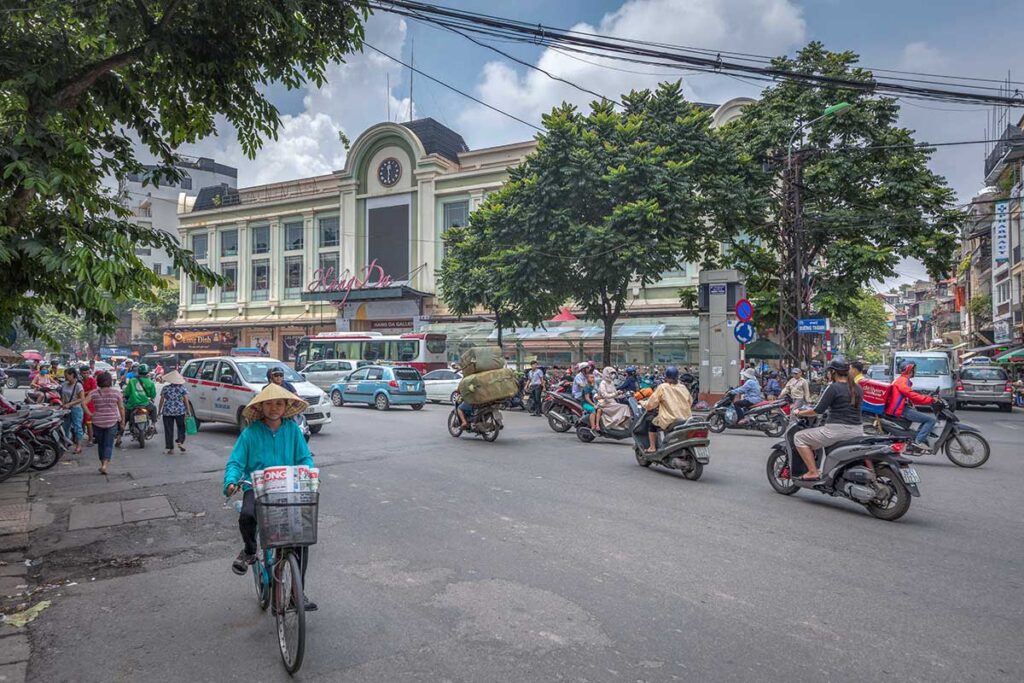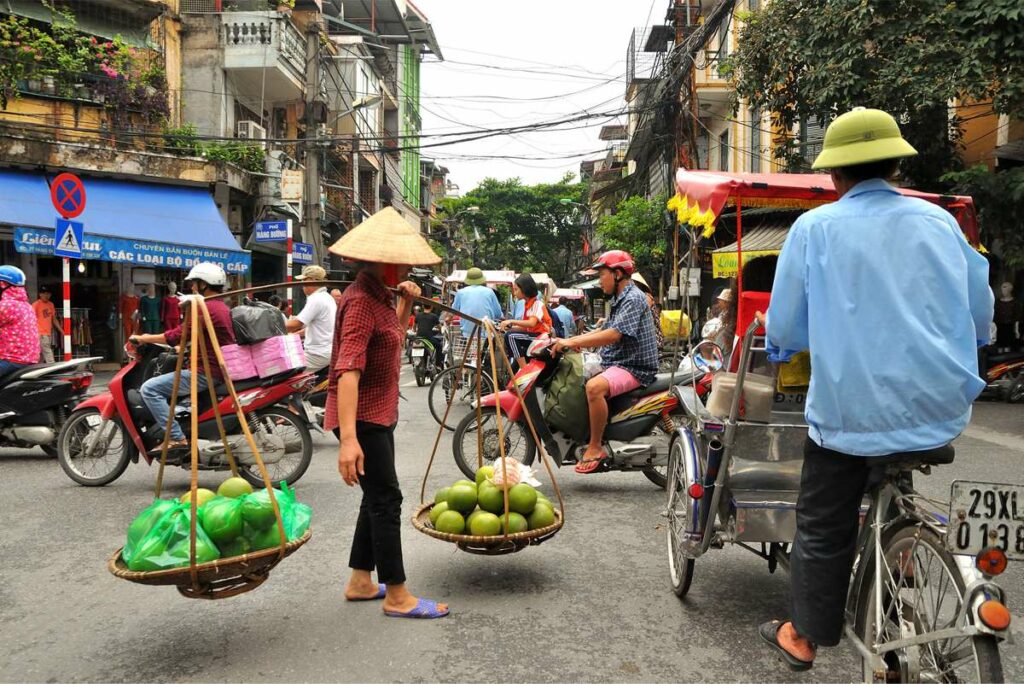What is Hang Da Market like?
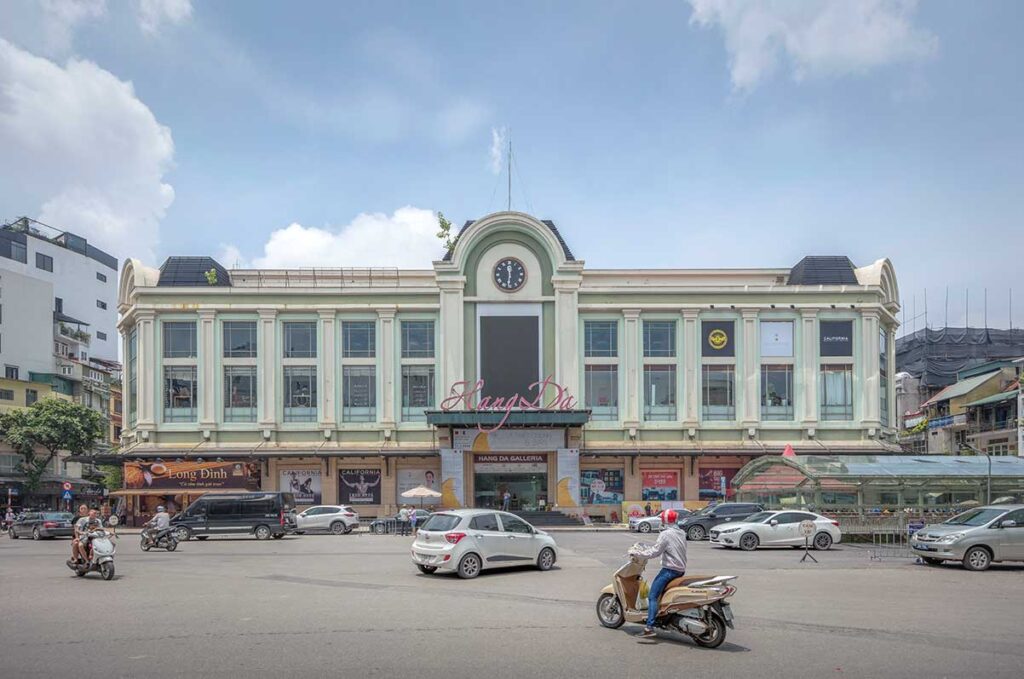
Hang Da Market sits in Hanoi’s Hoan Kiem District, just on the edge of the Old Quarter, within easy walking distance of many popular streets. It’s a strange mix of a traditional wet market, secondhand fashion hub, and near-abandoned shopping mall — all housed in a five-story building with most of the real activity hidden in the basement. Some parts feel lifeless and forgotten, while others buzz with food stalls and bargain hunters.
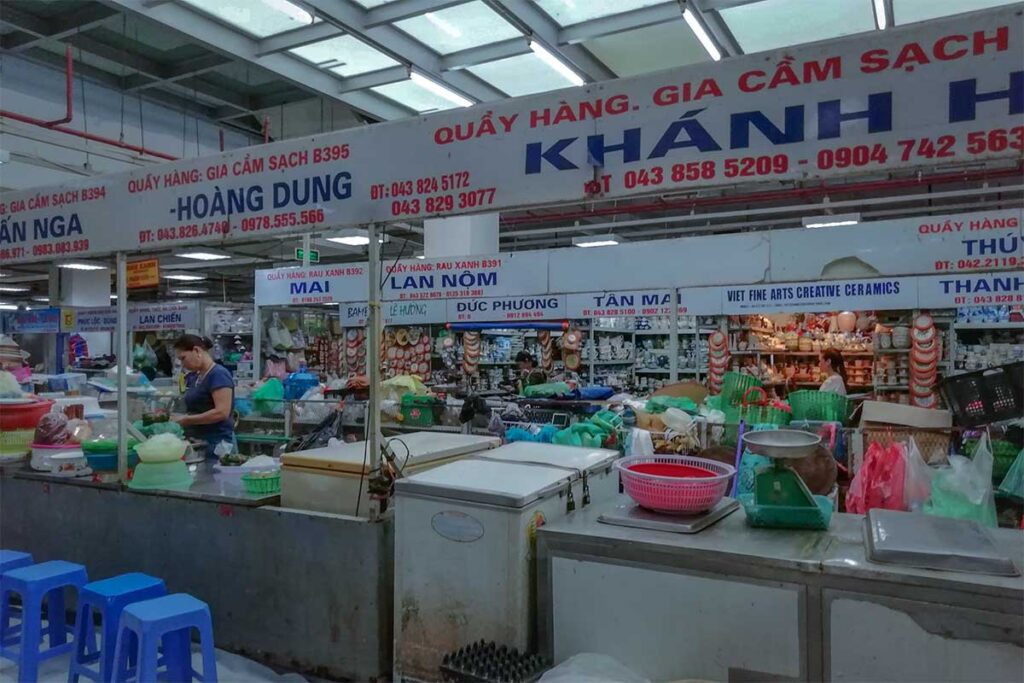
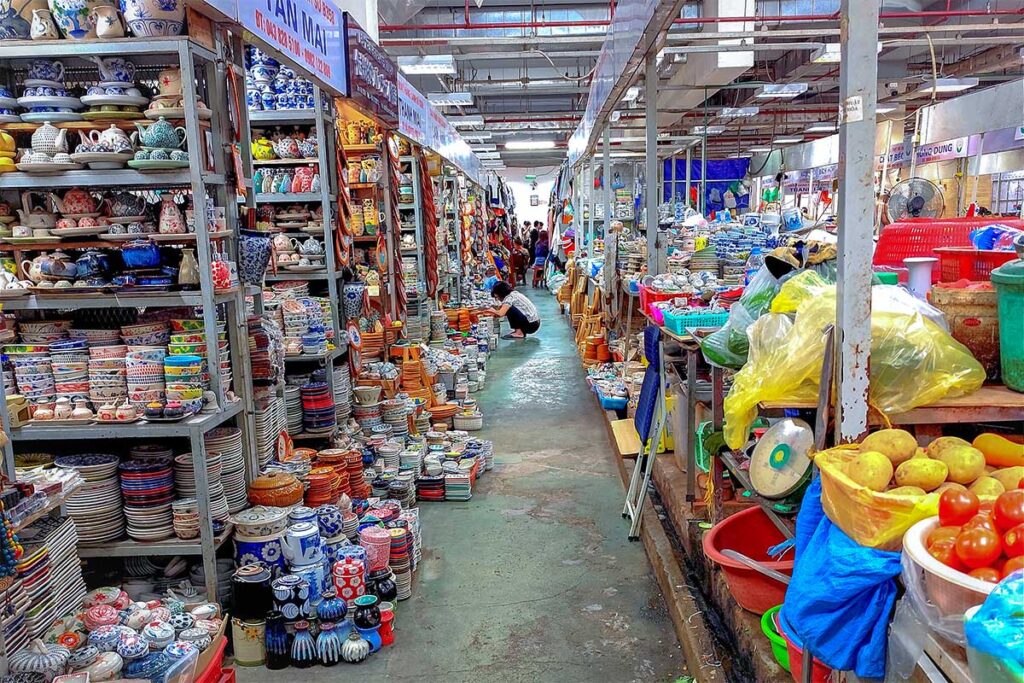
Originally a busy open-air market known for selling leather goods, Hang Da was rebuilt in 2010 into a modern concrete structure. Locals now refer to it as the “underground market” because the main market area, including food and clothes, is located below ground level. While it’s no longer the go-to shopping spot for locals, it still draws curious visitors looking for cheap eats, ceramics, or a different slice of Hanoi life.
Highlights of visiting Hang Da Market
1. The food stalls in the basement
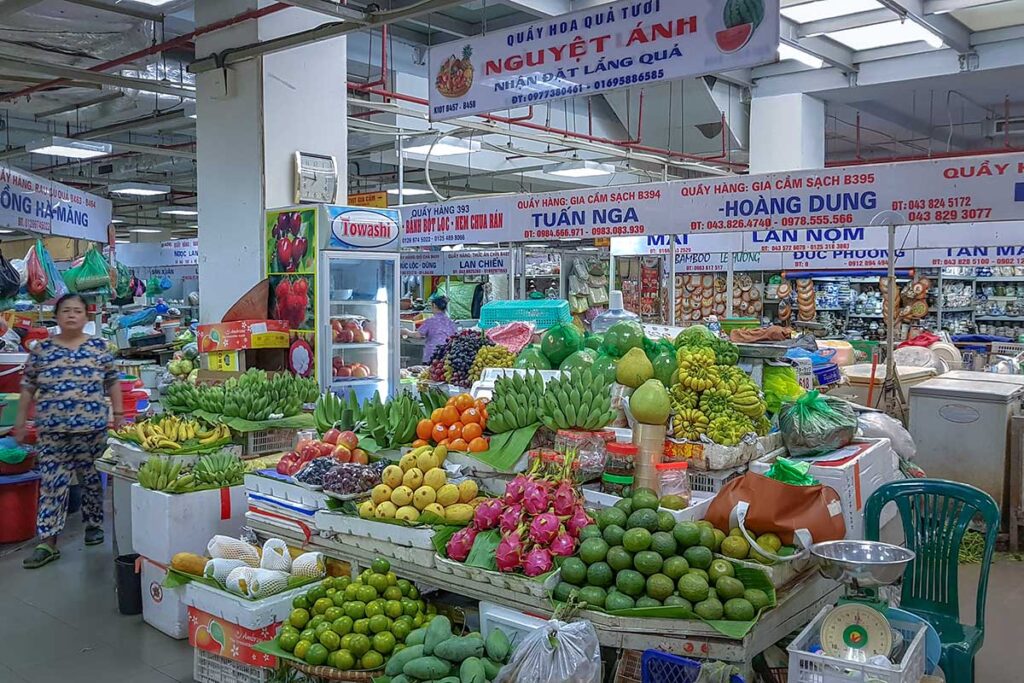
Tucked into one corner of the basement, the small food court offers a surprisingly diverse range of local dishes. You’ll find classic Vietnamese meals like pho ga (chicken noodle soup), mien luon (eel noodles), bun thang, sticky rice, and simple rice plates — all at very affordable prices. It’s a good lunch stop if you’re already nearby, especially around midday when most stalls are open and serving hot food.
2. Secondhand clothes & Bargain fashion
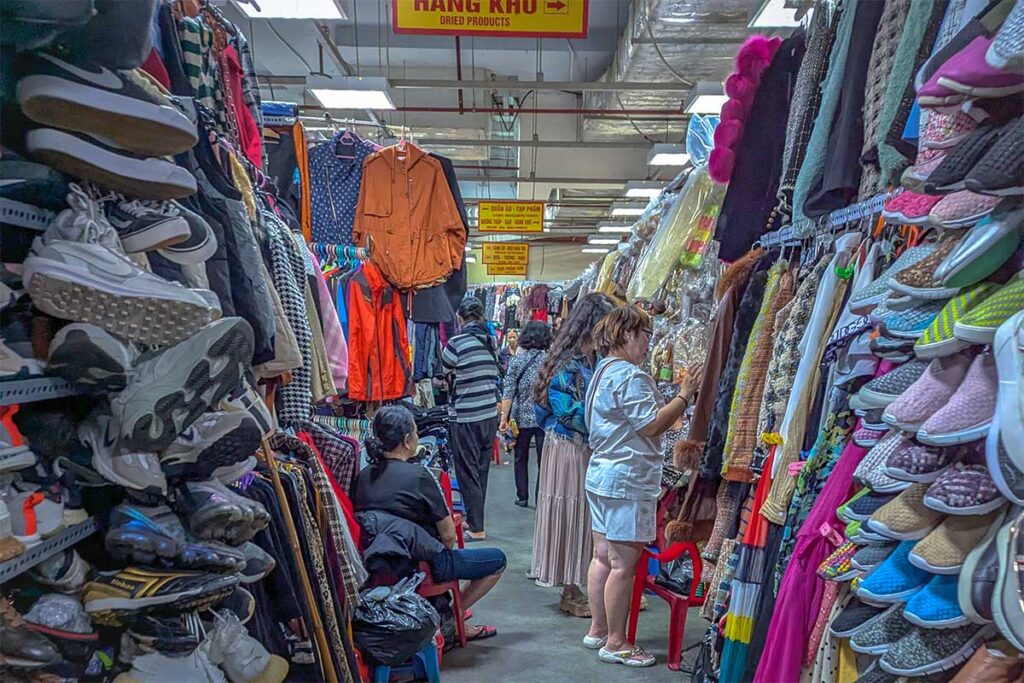
The basement is also home to racks of secondhand and overstock clothing, known locally as “hang thung.” Some of it is true thrift — mixed quality, buried gems — while other items come from brand overruns or unsold stock. If you enjoy digging for vintage finds or fashion on a budget, this is one of the better places in Hanoi. Prices are often fixed or less flexible than at street markets, but still far below boutique prices.
3. Ceramics and Souvenirs
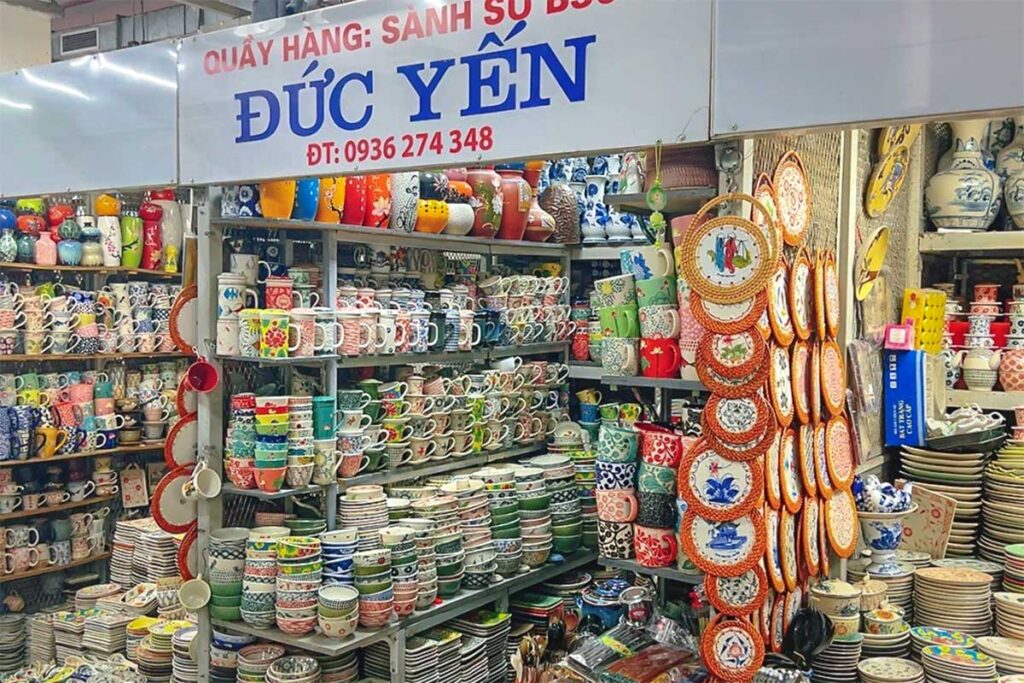
A few stalls scattered through the basement and first floor sell Bat Trang-style ceramics — cups, bowls, vases, and other pottery pieces that make great souvenirs. There are also small shops offering lacquerware, decorative trays, or handmade gifts, though selection and availability can vary. It’s not a major craft market, but still a good place to browse for something authentic and handmade.
4. The odd, Quiet upper floors
Once intended to be a modern shopping mall, the upper floors now feel mostly abandoned. You’ll find a few alcohol shops, boxed sweets, and some empty event spaces, but not much else. The echoey halls, empty storefronts, and worn escalators give the place a surreal, faded atmosphere — oddly photogenic for those interested in urban decay or offbeat city corners.
Practical visiting tips
Opening times and Best time to visit
Hang Da Market is open daily from around 6:00 AM to 6:00 PM, though some sections may open or close earlier. If you’re coming for fresh produce or wet market goods, go in the early morning when vendors are just setting up and the food is freshest. The small food court is best around lunchtime (11:30 AM–1:30 PM), when it’s at its liveliest. Avoid midday if possible — the heat, quiet atmosphere, and mostly empty upper floors can make the experience feel a bit dull.
Shopping tips
- What to buy: Look for secondhand clothing, Bat Trang-style ceramics, lacquerware, and local food. The market isn’t packed with souvenirs, but there are still some worthwhile finds.
- Bargaining: Light haggling is common, especially in the clothing section. That said, prices are often already low, and some stalls are less flexible than what you’d find in street markets.
- Bring cash: Most vendors deal in Vietnamese dong only, and small bills are preferred. Card payments are rare.
- Adjust expectations: This isn’t a tourist-friendly market with polished service. Some vendors may seem blunt or uninterested, while others are helpful if approached politely.
How to get there
Hang Da Market is easily walkable from the Old Quarter — around 500 to 900 meters depending on where you’re starting. The walk takes you through lively streets and can be part of the experience.
If you prefer not to walk, take a Grab car or motorbike. Travel time is usually under 10 minutes, though it can double during rush hour. The building is visible but the entrance is a bit tucked away, so don’t hesitate to ask locals or security staff if unsure where to go.
What’s nearby
To make the visit more worthwhile, combine Hang Da Market with other nearby attractions:
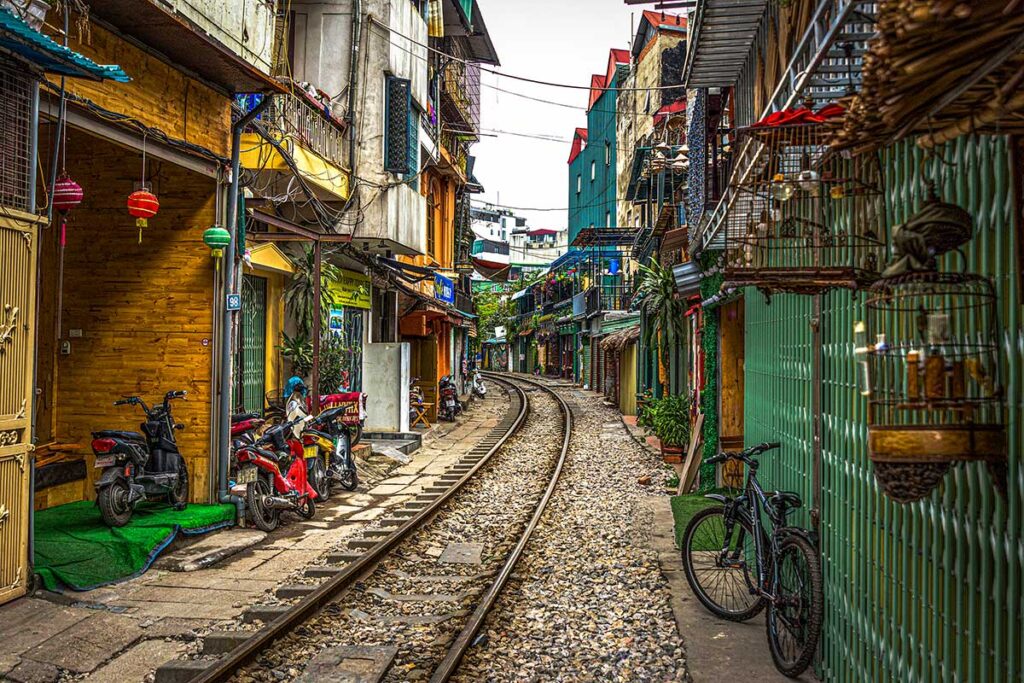
Hanoi Train Street – A short walk (less than 5 minutes) takes you to one of Hanoi’s most iconic photo spots, where trains pass through a narrow residential alley.
St. Joseph Cathedral – Around 500 meters from the market, this neo-Gothic landmark is one of the city’s most photogenic churches.
And of course the Old Quarter itself. You’re already on its southern edge, so it’s easy to keep exploring its maze of streets, cafés, and shops. For more ideas in the area, check out our guide to the best things to do in Hanoi’s Old Quarter.
Is Hang Da Market worth visiting?
Whether Hang Da Market is worth your time depends on what kind of traveler you are. If you’re hoping for a bustling, vibrant market like Dong Xuan or Ben Thanh in Ho Chi Minh City, you might be disappointed — many shops are closed, the upper floors feel abandoned, and the atmosphere can be quiet or even a bit eerie. But if you enjoy digging through vintage clothes, browsing local ceramics, or sampling cheap noodle dishes in a no-frills setting, it has its charm.
Pros: affordable food, a few unique finds like Bat Trang pottery or secondhand fashion, and it’s an easy stop if you’re nearby.
Cons: patchy vendor presence, uneven customer service, and a vibe that feels more faded than lively.
It’s best suited for curious travelers, those who enjoy offbeat places, or anyone already exploring the southern edge of the Old Quarter or Hanoi Train Street.
Other markets to consider:
- Dong Xuan Market – Hanoi’s main wholesale market with packed aisles, local snacks, and a chaotic energy.
- Long Bien Market – A raw, late-night wholesale produce market under the Long Bien Bridge, best visited between 2–5 AM.
- Hanoi Weekend Night Market – Held Friday to Sunday evenings, this pedestrian market is full of souvenirs, street food, and energy.
For more inspiration, check out our complete guide to the best markets in Hanoi.
